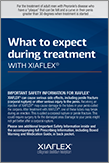Take an in-depth look at the treatment procedure for
Dr. Gelbard is a urologist with more than 30 years of experience in the study of Peyronie's disease. He has also served as the principal investigator in several studies, and had been involved with the 2 pivotal clinical trials for
Please see the full Prescribing Information, including BOXED WARNING and Medication Guide.
Learn about the pathologic wound healing that is characteristic of Peyronie's disease.
Please see the full Prescribing Information, including BOXED WARNING and Medication Guide.
To learn more about becoming a trained injector of
Trained injectors are included in a national Specialist Locator
A Risk Evaluation and Mitigation Strategy (REMS) is a strategy to manage known or potential serious risks associated with a drug and is required by the Food and Drug Administration (FDA) to ensure that the benefits of the drug outweigh the risks. Endo has worked with the FDA to develop the
Because of the risks of corporal rupture and other serious injuries to the penis in the treatment of Peyronie's disease,

Help patients get the conversation started using the helpful questions in this discussion guide.

Educate patients starting out with